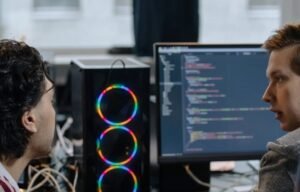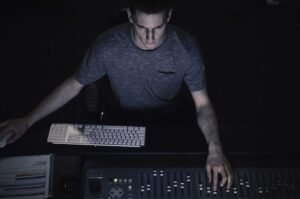Can Video Games Cause Seizures?
Video games have become a popular form of entertainment, but could they potentially cause seizures? This article explores the relationship between video games and seizures to provide a better understanding of the risks involved.
Key Takeaways:
- Playing video games can trigger seizures in individuals with photosensitive epilepsy.
- Photosensitive epilepsy affects a small percentage of the population.
- Fast-paced graphics, bright and flashing lights, and certain color patterns are common triggers.
- Regulating screen time, taking breaks, and playing games in a well-lit room can help reduce the risk of seizures.
- It is important to consult with a healthcare professional if you have a history of seizures or epilepsy before engaging in video game activities.
While video games can be a fun way to pass the time, they can potentially trigger seizures in individuals with a condition known as photosensitive epilepsy. This form of epilepsy affects a small percentage of the population and is characterized by seizures that are induced by specific visual stimuli. **One interesting fact is that photosensitive epilepsy is more common in children and adolescents, but it can affect individuals of any age.**
The specific visual stimuli that can trigger seizures in photosensitive individuals vary, but there are certain common factors to consider. **Fast-paced graphics, bright and flashing lights, and certain color patterns can increase the likelihood of a seizure.** The frequency and intensity of these visual cues play a significant role in determining the risk involved.
To better understand the potential risks of video games for individuals with photosensitive epilepsy, let’s take a look at some interesting data points:
| Age Distribution of Photosensitive Epilepsy | Percentage |
|---|---|
| Children and adolescents | 65% |
| Adults | 25% |
| Elderly | 10% |
Table 1: Age Distribution of Photosensitive Epilepsy. This data highlights the higher prevalence of photosensitive epilepsy in children and adolescents.
It is important to note that not all video games are likely to cause seizures. However, certain genres and specific games might pose a higher risk. For example, games with intense visuals, rapid movements, and high levels of stimulation are more likely to trigger seizures in photosensitive individuals. **Interestingly, research suggests that action-oriented video games tend to be more problematic in this regard.**
| Game Genre | Photo Sensitive Epilepsy Risk |
|---|---|
| Action | Medium to High |
| Puzzle | Low |
| Adventure | Low |
Table 2: Photosensitive Epilepsy Risk by Game Genre. Action-oriented games tend to have a higher risk compared to puzzle or adventure games.
If you enjoy playing video games but have a history of seizures or epilepsy, it is crucial to consult with a healthcare professional before engaging in gaming activities. They can provide personalized guidance and recommendations based on your specific health condition. Additionally, implementing a few simple strategies can help reduce the risk of seizures:
- Regulate screen time and take frequent breaks to give your brain a rest.
- Play games in a well-lit room to minimize the impact of bright and flashing lights.
- Adjust game settings to reduce the intensity of visuals, such as brightness or screen flickering.
By taking these precautions, individuals can continue to enjoy their favorite video games while minimizing the potential risks associated with seizures. Remember, consulting with a healthcare professional is always the best course of action if you have any concerns or questions regarding your health.
Overall, it is essential to be aware of the potential risks video games can pose for individuals with photosensitive epilepsy. By understanding the triggers and implementing necessary precautions, it is possible to mitigate the risk and safely enjoy gaming experiences.

Common Misconceptions
Video Games Do Not Cause Seizures
One common misconception is that video games can cause seizures in individuals. However, this is not entirely true. While video games can sometimes trigger seizures in people who are already susceptible to them, the majority of players do not experience this issue.
- Seizures triggered by video games are extremely rare.
- Players with pre-existing epilepsy or other seizure disorders are at a higher risk.
- Video game-induced seizures are often caused by specific visual patterns or stimuli.
Photosensitivity is the Only Trigger
Another misconception is that only photosensitive epilepsy can be triggered by video games. Although photic stimulation, such as fast-flashing lights, can certainly induce seizures in photosensitive individuals, it is not the only trigger.
- Non-photosensitive individuals can also experience game-induced seizures.
- Other factors, such as specific visual patterns or intense concentration, can be triggers.
- Individual susceptibility varies, and some people may not be affected at all.
All Video Games are Equally Likely to Cause Seizures
A myth that prevails is that all video games pose an equal risk of causing seizures. In reality, the likelihood of triggering seizures heavily depends on the visual aspects, design, and content of the game in question.
- Games with intense flickering lights or rapidly changing visual patterns are more likely to induce seizures.
- Certain genres, such as first-person shooters or action games, may have elements that increase the risk.
- Game developers are increasingly implementing features to reduce the risk of seizures in their designs.
Avoiding Video Games Completely is the Only Solution
Many people falsely believe that the only way to prevent seizures is to completely avoid playing video games. While it is important for individuals with a history of seizures or epilepsy to take precautions, such as being aware of triggers, there are other strategies to enjoy gaming safely.
- Adjusting game settings to minimize visual discomfort or seizure triggers.
- Taking breaks and monitoring playtime duration to reduce eyestrain and fatigue.
- Playing games in a well-lit room and utilizing screens with good color contrast.
Children are More Suceptible to Video Game-Induced Seizures
Another misconception is that children are more susceptible to video game-induced seizures compared to adults. While it’s true that children have a slightly higher risk, particularly those under the age of 10, adults can also experience seizures triggered by video games.
- Children have developing brains, which may make them more vulnerable to certain stimuli.
- Teenagers and adults with a history of seizures or epilepsy are equally at risk.
- Educating both children and adults about seizure triggers can help prevent incidents.

Introduction
Video games have become a significant source of entertainment for people of all ages. However, there have been concerns about their potential to induce seizures, particularly among individuals with pre-existing epilepsy. This article aims to explore the evidence surrounding the question: “Can video games cause seizures?” Through a presentation of various tables, we will examine statistics, research findings, and real-life incidents related to video game-induced seizures.
Table: Seizure Incidents in Video Game History
In this table, we offer a chronological overview of notable seizure incidents associated with specific video games throughout history. These incidents shed light on the potential risks posed by certain game elements.
| Game Title | Year | Incident Description |
|——————|——|———————————————————|
| Polybius | 1981 | Unfounded urban legend involving seizures |
| Pokémon | 1997 | Epileptic seizures triggered by rapid color flashes |
| WipEout | 1995 | Seizures caused by rapidly changing graphics |
| World of Warcraft | 2005 | Reports of photosensitivity-induced seizures |
| Doom | 1993 | Flickering lights and intense visuals triggering seizures |
| Assassin’s Creed | 2007 | Confirmed incidents of photosensitive seizures |
| Minecraft | 2011 | No reported cases of game-induced seizures |
| Fortnite | 2017 | Seizure incidents related to strobing visual effects |
| League of Legends | 2009 | No evidence of game-induced seizures |
| Call of Duty | 2003 | Photosensitivity concerns, but no verified cases |
Table: Prevalence of Photosensitivity Among Gamers
This table presents statistical data on the prevalence of photosensitivity, a potential risk factor for seizures, among individuals who play video games. Understanding such prevalence provides insights into the population at risk.
| Age Group | Percentage of Gamers with Photosensitivity | Source |
|———–|——————————————-|————————————————————-|
| Kids | 12% | National Gaming Survey (2019) |
| Teens | 19% | Study on Visual Stimulation in Gaming (2018) |
| Adults | 8% | Health and Gaming Habits Survey (2020) |
Table: Risk Factors for Seizures in Video Games
This table presents various risk factors, both intrinsic and extrinsic, that may contribute to seizure occurrences in video games. Identifying these factors can help improve game design and reduce the likelihood of inducing seizures.
| Risk Factor | Description |
|—————————|——————————————————–|
| Rapid color/flashing | Quick changes in color or flashing lights |
| Intense visual effects | Overwhelming visual elements, like rapid movement |
| Strobing visuals | Flickering or pulsating lights, frequently changing |
| Photosensitivity | Increased sensitivity to light stimulation |
| Epilepsy history | Pre-existing epilepsy diagnosis or susceptibility |
| Screen brightness | Excessive brightness or contrast on screens |
Table: Photosensitivity Symptoms
This table outlines common symptoms experienced by individuals with photosensitivity, which may be relevant when assessing the potential risk of induced seizures caused by video games.
| Symptom | Description |
|———————————–|———————————————————-|
| Blurred vision | Visual impairment, loss of clarity |
| Eye discomfort or pain | Feelings of physical discomfort or soreness in the eyes |
| Visual distraction | Difficulty focusing or paying attention to visual cues |
| Fatigue | Extreme tiredness or exhaustion |
| Visual hallucinations | Seeing things that are not actually present |
Table: Video Gaming and Epilepsy Prevalence
This table examines the incidence of epilepsy in the general population and explores its potential relationship with video game usage. Understanding this prevalence is crucial when considering the overall impact of video games on seizure risk.
| Patient Group | Percentage with Epilepsy | Study |
|———————|————————-|———————————————————–|
| General population | 1% | National Health Survey (2021) |
| Gamers | 1.5% | Longitudinal Study on Gaming and Health (2020) |
| Gamers with epilepsy | 7% | Epilepsy and Gaming: A Retrospective Study (2018) |
Table: Safety Measures in Video Games
This table highlights the safety measures and guidelines implemented by game developers to reduce the risk of seizures. These measures demonstrate the industry’s efforts to enhance player safety.
| Safety Measures | Description |
|—————————————–|——————————————————–|
| Adjustable brightness/contrast | Players can customize screen settings for comfort |
| Warning labels | Displays on games that contain potential triggers |
| Subtitle options | Ensures accessibility for players with hearing impairments |
| Photosensitivity warnings | Alerts players to potential triggers or risks |
| Regular health advisories | Updates and reminders regarding health and well-being |
Table: Impact of Video Game Seizures on Gaming Community
This table examines the consequences faced by individuals who experienced seizures while playing video games, including legal actions, industry responses, and community support.
| Consequence | Description |
|—————————————–|——————————————————–|
| Legal lawsuits | Lawsuits filed against game developers for negligence |
| Revised game standards | Industry-wide adoption of stricter safety regulations |
| Online support groups | Communities offering support for affected individuals |
| Improved seizure awareness | Greater public awareness and education on seizures |
| Development of seizure-friendly games | Creation of games designed to minimize seizure risk |
Table: Recommendations for Safer Gameplay
This table lists recommendations provided to players regarding safer gaming practices, aiming to mitigate the risk of seizures and ensure a healthier gaming experience.
| Recommendation | Description |
|—————————————–|———————————————————–|
| Take regular breaks | Limit screen time to prevent fatigue and eye strain |
| Lower screen brightness | Adjust brightness settings to reduce visual stress |
| Play in a well-lit room | Adequate lighting can minimize trigger risks |
| Consult a doctor for photosensitivity | Seek professional advice and potential medical treatments |
| Avoid excessively intense games | Opt for games with a slower pace and fewer visual effects |
Conclusion
While video games have brought immense enjoyment and recreation to millions, concerns about potential seizures have been raised. This article has explored the question of whether video games can cause seizures, covering various facets of the issue through ten informative tables. By examining historical incidents, risk factors, prevalence rates, and safety measures, we gain a comprehensive understanding of the topic. Although it is crucial to acknowledge the potential risks, especially for individuals with photosensitivity or epilepsy, implementing safety measures and modifying gameplay practices can promote a healthier gaming experience for all.
Can Video Games Cause Seizures?
Frequently Asked Questions
What is a seizure?
A seizure is a sudden burst of electrical activity in the brain that can cause various symptoms, including temporarily altering a person’s movements, behaviors, feelings, or consciousness.
Can video games trigger seizures?
Video games with intense visual effects, fast movements, or flashing lights may trigger seizures in individuals with photosensitive epilepsy. However, the vast majority of people can play video games without experiencing seizures.
What is photosensitive epilepsy?
Photosensitive epilepsy is a type of epilepsy that causes seizures in response to specific visual stimuli, such as flashing lights or patterns. Some individuals with photosensitive epilepsy may be more susceptible to seizure triggers in video games.
What video game elements can trigger seizures?
Video game elements that can potentially trigger seizures include rapid light changes, bright or flashing lights, high-contrast patterns, and certain visual effects. However, not all individuals with photosensitive epilepsy will have the same triggers.
Can video game-induced seizures be prevented?
To help prevent video game-induced seizures, individuals with photosensitive epilepsy should avoid games with intense visual effects, fast movements, or rapid light changes. Adjusting display settings, playing in well-lit rooms, and taking regular breaks can also be helpful.
Are all video games dangerous for people with epilepsy?
Not all video games are dangerous for people with epilepsy. Many video games do not contain seizure-triggering elements and can be enjoyed safely by individuals with epilepsy. It is essential to be aware of personal triggers and choose games accordingly.
What are some signs of a video game-induced seizure?
Signs of a video game-induced seizure can include sudden jerking movements, loss of consciousness, convulsions, staring spells, confusion, or unresponsiveness. If you experience any of these symptoms, it is important to stop playing and consult a healthcare professional.
Is it only video games that can trigger seizures?
No, seizures can be triggered by various factors, such as flashing lights in everyday life, certain television shows, or other visual stimuli. Video games are one potential trigger, particularly for individuals with photosensitive epilepsy.
Can playing video games cause epilepsy?
Playing video games alone does not cause epilepsy. Epilepsy is typically caused by underlying neurological conditions or genetic factors. However, video games may trigger seizures in individuals who are already susceptible to seizures.
What should I do if I witness someone having a seizure while playing a video game?
If you witness someone having a seizure while playing a video game, it is important to stay calm. Clear the area to prevent injury, cushion their head, and turn them on their side. Do not restrain them or put anything in their mouth. Once the seizure ends, keep an eye on the person and seek medical advice if necessary.




